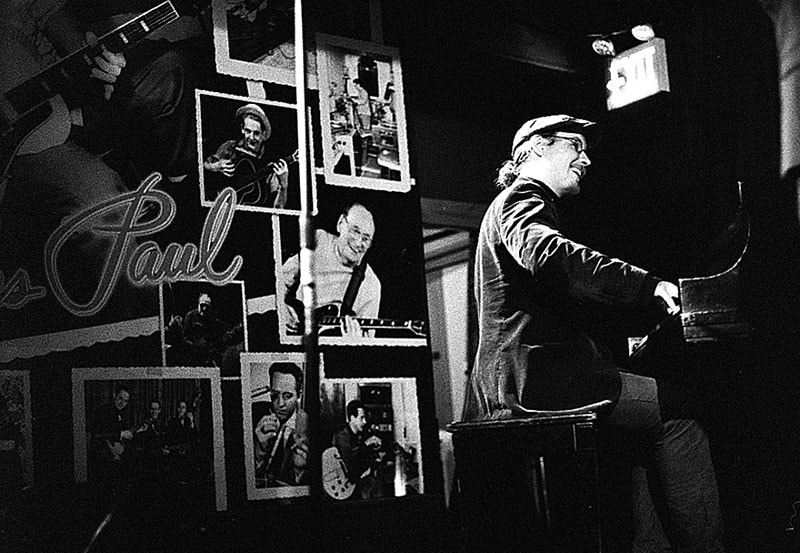
Hayden Hill
Hayden founded PianoGroove in 2015 with the goal of making the world a more musical place. He shares his love for jazz piano through his online courses and manages the community area of PianoGroove.
Live Seminar Resources
Live Seminar Resources
PDF Downloads
- The Whole Step 251 Sequence
Join PianoGroove Pro to access all downloads and learning resources.
Download theory supplements, midi files, chord changes and full note-for-note transcriptions of every lesson.
- iRealPro Practice Exercises
Join PianoGroove Pro to access all downloads and learning resources.
Download theory supplements, midi files, chord changes and full note-for-note transcriptions of every lesson.
- iRealPro Jazz Songs Playlist
Join PianoGroove Pro to access all downloads and learning resources.
Download theory supplements, midi files, chord changes and full note-for-note transcriptions of every lesson.
Related Lessons
Forum Threads
Seminar Description
Seminar Description
Rootless Voicings for Jazz Piano
Understanding Rootless Voicings
Rootless voicings are an essential tool for jazz pianists, particularly when playing in a trio or larger ensemble where the bass player provides the root. These voicings allow for greater harmonic sophistication, smoother voice leading, and a more spacious sound.
This lesson is divided into three sections:
- How and why we use rootless voicings
- Exercises and drills to internalize them
- Comparing rooted and rootless voicings in real-world applications
Why Use Rootless Voicings?
Rootless voicings provide a more contemporary and polished jazz sound. They are commonly used in the following contexts:
1. Stride & Solo Playing
For solo jazz pianists, rootless voicings allow for a greater range of motion. A common stride technique involves alternating between a root in the bass and a rootless chord voicing in the midrange.
2. Expressive & Textured Playing
Rootless voicings help create rich textures. For example, instead of playing an F-7 as F, Ab, C, and Eb, we can play Ab, C, Eb, and G, creating an F-9 sound that blends smoothly into the surrounding harmony.
3. Playing with a Bass Player
In a band setting, the bassist usually plays the root, freeing the pianist to use voicings that focus on extensions and alterations, such as 9ths, 11ths, and 13ths.
Essential Drills for Mastery
The Whole-Step 2-5-1 Drill
A foundational exercise for rootless voicings is the whole-step 2-5-1 drill, moving through all 12 keys. This drill helps develop the ability to play rootless voicings instinctively.
Type A & Type B Voicings
- Type A: Starts with the 3rd of the minor 7th chord
- Type B: Starts with the 7th of the minor 7th chord
For example, in a 2-5-1 in C Major:
- Type A: D-9 (F, A, C, E) → G13 (F, A, B, E) → Cmaj9 (E, G, B, D)
- Type B: D-9 (C, E, F, A) → G13 (B, E, F, A) → Cmaj9 (B, D, E, G)
Applying Rootless Voicings in Stride
Practicing stride technique using rootless voicings can strengthen independence between the hands. The exercise follows:
- Play the root in the bass (left hand)
- Jump up to the rootless voicing (left hand)
- Repeat in all 12 keys using the whole-step 2-5-1 pattern.
Playing Without the Root
To truly master rootless voicings, pianists should practice playing without any roots at all. This helps develop an intuitive understanding of how the voicings function.
For example, a 2-5-1 in Bb Major:
- Cm9 (Eb, G, Bb, D)
- F13 (Eb, G, A, D)
- Bbmaj9 (D, F, A, C)
This forces the pianist to "hear" the harmony without the root being played explicitly.
Comparing Rooted & Rootless Voicings
A great way to understand the effect of rootless voicings is to compare them with traditional rooted chords. Try playing a jazz standard such as "Misty", first with simple triads or 7th chords, and then with rootless voicings. You’ll notice the difference in richness and voice leading.
For example:
- Rooted: F-7 (F, Ab, C, Eb) → Bb7 (Bb, D, F, Ab) → Ebmaj7 (Eb, G, Bb, D)
- Rootless: F-9 (Ab, C, Eb, G) → Bb13 (Ab, C, D, G) → Ebmaj9 (G, Bb, D, F)
Practice Tips:
- Start Slow – Master rootless voicings in a few keys before attempting all 12.
- Use the Whole-Step 2-5-1 Drill – This ensures well-rounded practice.
- Listen to Jazz Recordings – Pay attention to how pianists use rootless voicings in different contexts.
- Practice in Context – Apply rootless voicings to actual tunes rather than just drilling them in isolation.
- Experiment with Extensions & Alterations – Once comfortable, add 9ths, 13ths, and altered tones for color.
By incorporating these exercises into your practice routine, you will develop a strong grasp of rootless voicings and unlock a more sophisticated jazz sound.






Great seminar, Hayden, very useful and accessible. I am sorry I was not able to tune in for the live session but glad I could catch it on replay. I found particularly instructive the discussion you had right at the beginning as to the how and why you use rootless voicings in your own playing.
Along those lines I wonder if you could take a deep dive in a future seminar as to your thought process in choosing chord voicings when arranging a jazz standard, how and why you pick for example among a rootless voicing with or without a stride pattern, or a two-handed spread voicing, between a basic three-note voicing or a fuller 6-9 voicing, an upper structure, block chords, So-What, Herbie Hancock or Kenny Barron voicings, etc, based on melody note, tempo and rhythm of the song, the mood you are trying to convey and any other factors. What extensions and alterations do you prefer to include and why?
I know this is a very broad question and that many of these topics are covered throughout the PianoGroove curriculum but I think it would be very useful to devote a full live seminar to them.
Also have a comment on the drills. While I am nowhere at the level I aspire to eventually be, after months of practice I am above the level I thought I would be, and I am beginning to add some alterations to the dominant13 chord and experiment with various sounds. These drills do work. I have also found it useful to drill the voicings in isolation, not necessarily as part of a 2-5-1, since not everything in jazz is a 2-5-1, to use a metronome and to do the drills without referring to any chord charts but rather by knowing what chords belong in each progression. And as you say, the learning is reinforced when the voicings and progressions are applied to a jazz standard like for example the Ebm9, Ab13, DbMaj9 progression in Body and Soul and the bridge of In A Sentimental Mood. That progression is well ingrained in my mind and fingers now.
Looking forward to all future seminars.
Hi Humberto,
Thanks for your comments.
Yes absolutely I can cover that. As you say it is a broad question but we can certainly explore all of this in a ‘deep dive’ session for a specific jazz standard.
Yes these drills certainly do work. They are the drills I used to learn these progressions by memory.
Tuomo hosted a great session yesterday on “Drop 2 Voicings” both rooted, and rootless. This is just a slight variation on the drills that I cover here, and using drop 2 gives a more balanced and sophisticated sound.
You can see his seminar here and I just added the chapters: pianogroove.com/live-seminars/drop-2-voicings-zoom-workshop/
Yes indeed that’s a great exercise too. Using the metronome is a good idea so that you are trying to keep a pulse and ofcourse start slowly and gradually speed up.
Yes exactly. It’s important to also play through the harmony of tunes, as this is the end goal.
It’s a gradual process… I started learning these progressions around 12 years ago and I can still get better at them, but as I mention that shouldn’t hold us back from perfecting our voicings in a selected number of tunes which make up our ‘go-to’ repertoire.
Awesome… likewise!
Talk soon,
Hayden
Hayden, thanks so much for your response and link to Tuomo’s seminar.
Hi Hayden,
Great seminar, thank you I am fairly new to your courses, enjoying them very much.
Are the iReal pro files still available? The link above doesn’t seem to work.
Thanks Rob
Hey Robbie,
Thanks for letting me know about this.
There was an issue with this page which I have just fixed. The downloads are now working, and I also added the chapter markings to the seminar.
Please let me know if I can help further, and I’m glad you are enjoying the course.
Best,
Hayden
That’s great thanks Hayden